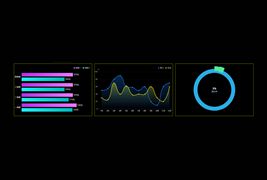JS中循环遍历数组的四种方式总结
这篇文章主要给大家总结介绍了关于JS中循环遍历数组的四种方式,文中通过示例代码介绍的非常详细,对大家的学习或者工作具有一定的参考学习价值,需要的朋友们下面随着小编来一起学习学习吧
本文比较并总结遍历数组的四种方式:
for 循环:
for (let index=0; index < someArray.length; index++) {
const elem = someArray[index];
// ···
}for-in 循环:
for (const key in someArray) {
console.log(key);
}数组方法 .forEach():
someArray.forEach((elem, index) => {
console.log(elem, index);
});for-of 循环:
for (const elem of someArray) {
console.log(elem);
}for-of 通常是最佳选择。我们会明白原因。
for循环 [ES1]
JavaScript 中的 for 循环很古老,它在 ECMAScript 1 中就已经存在了。for 循环记录 arr 每个元素的索引和值:
const arr = ['a', 'b', 'c'];
arr.prop = 'property value';
for (let index=0; index < arr.length; index++) {
const elem = arr[index];
console.log(index, elem);
}
// Output:
// 0, 'a'
// 1, 'b'
// 2, 'c'for-in 不是循环遍历数组的好方法:
它访问的是属性键,而不是值。
作为属性键,数组元素的索引是字符串,而不是数字。
它访问的是所有可枚举的属性键(自己的和继承的),而不仅仅是 Array 元素的那些。
for-in 访问继承属性的实际用途是:遍历对象的所有可枚举属性。
数组方法.forEach()[ES5]
鉴于 for 和 for-in 都不特别适合在数组上循环,因此在 ECMAScript 5 中引入了一个辅助方法:Array.prototype.forEach():
const arr = ['a', 'b', 'c'];
arr.prop = 'property value';
arr.forEach((elem, index) => {
console.log(elem, index);
});
// Output:
// 'a', 0
// 'b', 1
// 'c', 2这种方法确实很方便:它使我们无需执行大量操作就能够可访问数组元素和索引。如果用箭头函数(在ES6中引入)的话,在语法上会更加优雅。
.forEach() 的主要缺点是:
不能在它的循环体中使用 await。
不能提前退出 .forEach() 循环。而在 for 循环中可以使用 break。
中止 .forEach() 的解决方法
如果想要中止 .forEach() 之类的循环,有一种解决方法:.some() 还会循环遍历所有数组元素,并在其回调返回真值时停止。
const arr = ['red', 'green', 'blue'];
arr.some((elem, index) => {
if (index >= 2) {
return true; // 中止循环
}
console.log(elem);
//此回调隐式返回 `undefined`,这
//是一个伪值。 因此,循环继续。
});
// Output:
// 'red'
// 'green'可以说这是对 .some() 的滥用,与 for-of 和 break 比起来,要理解这段代码并不容易。
for-of循环 [ES6]
for-of 循环在 ECMAScript 6 开始支持:
const arr = ['a', 'b', 'c'];
arr.prop = 'property value';
for (const elem of arr) {
console.log(elem);
}
// Output:
// 'a'
// 'b'
// 'c'for-of 在循环遍历数组时非常有效:
用来遍历数组元素。
可以使用 await
如果有需要,可以轻松地迁移到 for-await-of。
甚至可以将 break 和 continue 用于外部作用域。
for-of 和可迭代对象
for-of 不仅可以遍历数组,还可以遍历可迭代对象,例如遍历 Map:
const myMap = new Map()
.set(false, 'no')
.set(true, 'yes')
;
for (const [key, value] of myMap) {
console.log(key, value);
}
// Output:
// false, 'no'
// true, 'yes'遍历 myMap 会生成 [键,值] 对,可以通过对其进行解构来直接访问每一对数据。
for-of 和数组索引
数组方法 .entries() 返回一个可迭代的 [index,value] 对。如果使用 for-of 并使用此方法进行解构,可以很方便地访问数组索引:
const arr = ['chocolate', 'vanilla', 'strawberry'];
for (const [index, elem] of arr.entries()) {
console.log(index, elem);
}
// Output:
// 0, 'chocolate'
// 1, 'vanilla'
// 2, 'strawberry'总结
for-of 循环的的可用性比 for,for-in 和 .forEach() 更好。
通常四种循环机制之间的性能差异应该是无关紧要。如果你要做一些运算量很大的事,还是切换到 WebAssembly 更好一些。
本文网址:https://www.zztuku.com/detail-8624.html
站长图库 - JS中循环遍历数组的四种方式总结
申明:如有侵犯,请 联系我们 删除。








您还没有登录,请 登录 后发表评论!
提示:请勿发布广告垃圾评论,否则封号处理!!